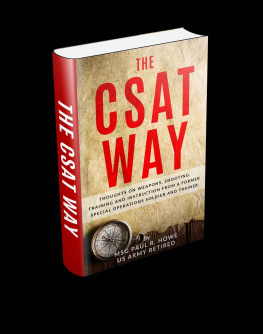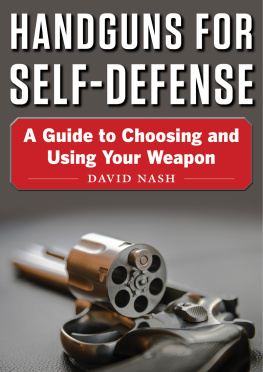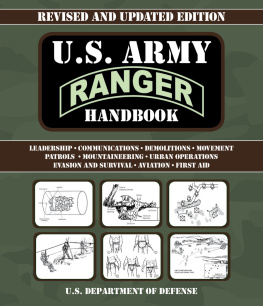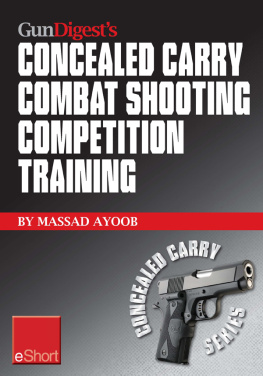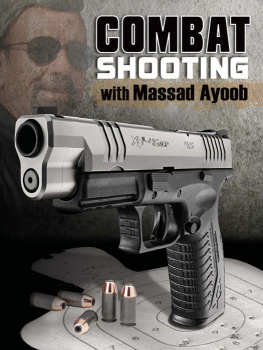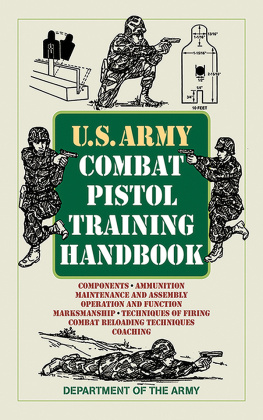THE CSAT WAY
THOUGHTS ON WEAPONS, SHOOTING, TRAINING AND INSTRUCTION FROM A FORMER SPECIAL OPERATIONS SOLDIER AND TRAINER
MSG PAUL R. HOWE
Copyright 2020 by Paul R. Howe
All rights reserved. No part of this publication may be reproduced, distributed or transmitted in any form or by any means, including photocopying, recording, or other electronic or mechanical methods, without the prior written permission of the publisher, except in the case of brief quotations embodied in critical reviews and certain other noncommercial uses permitted by copyright law.
Table of Contents
DEDICATION: AMERICA AND ITS PATRIOTS
I was fortunate to be born into a free and wonderful environment, a place that allowed me to maximize my life and energies. I would not have accomplished what I have in regards to firearms, shooting and instruction without being in America.
Law enforcement and the professionals within our country gave me a role model to follow, to include guidance and direction. The LEOs (law enforcement officers) I was able to interact with inspired me to push further and harder in life. The law enforcement community is the glue that holds our country together. Generally underpaid, undertrained and overworked, they continue to protect and serve for the right reasons.
The army provided me a home where I could learn and grow for a great deal of my life. Its mediocrity pushed me to personally improve and special ops gave me a home to refine my skills. Special thanks go to the noncommissioned officers (NCOs) who set the example and taught me to push farther and faster with greater precision, not because it was required, but because it was the right thing to do. Also, thanks for the confirmation in doing what is right versus what is popular. Also, I want to thank my wife, Connie, and my instructor staff for all their support.
Finally, thank you to all those in the history of our nation who have picked up a weapon to defend the country, the public, one another or themselves.
Introduction
My accomplishments, which I consider important to write this book, are as follows:
- Law Enforcement Officer from nineteen to twenty years of age
- US Army Soldier/Infantryman for twenty years involved in multiple combat operations
- Special Operations Assaulter, Sniper, Team Leader and Senior Instructor
- Overseas Contractor
- Law Enforcement/Government and Civilian Trainer for over twenty years
- Small businessman who fed his family on his ability to instruct and teach
- Masters degree with the attitude that I am a life-long student
Within this work, I will relate to my experiences in my training and tactical life, what I thought was important and finally what worked and did not work or work so well. Enduring a technological jump (computers/video) in our recent history, I will let you know how it impacted me and my profession and how I dealt with it on a personal and professional level in regard to shooting and training.
I took what I learned from those who came before and built upon it. Sometimes starting over, sometimes just tweaking what was given me. With the unlimited supply of tactical trainers, I will get into the reasoning and theory behind what I do and why. This is critical, as more often than not, current instructors only regurgitate what they learned and sometimes only bring 50 percent to 75 percent of the knowledge given to their classes, accepting mediocrity.
One of my goals was to set a new standard in this profession.
Foreword
The CSAT Way is the story of my tactical and training life, how I made it from point A to point B, and what decisions I made and why. This is my training manual of sorts. I hope to aid the reader on their tactical journey and give them the ability to sort out what is BS and what is not in the tactical world. This ability is priceless.
Another reason for this work is it will be a manual of arms and teaching techniques directed at my cadre. At the time of writing, I have a cadre of ten from mixed backgrounds who comprise an exceptional shooting staff. I will share my guidance to them and what I think is important. I will also relate the why we do things a certain way and how I helped them on their shooting and instructor journey. The book will cover everything from beginning to advanced problem shooters and how to make them technically, tactically and mentally proficient.
Special thanks to Coy Harry for his seamless transition from martial arts to shooting. As my sergeant major, he sets the standard for being a great instructor. Also, a shout out to Reid Heindrichs of Valor Ridge who is leading the next generation of trainers.
Current Instructors:
- Nick Stewart
- Andy Bayston
- Bryan Wilkinson
- Coy Harry
- Mark Busbee
- Cheston Thurman
- Joe Swann
- Don Johnson
- Rick Basagoitia
- Bob Whaley
CHAPTER 1
My History
There are no shortcuts in evolution
Louis D. Brandeis, speech in Boston, April 22, 1040

An ignorant student
I had a love for guns from the get-go.

My captured sister was my first training audience. I came from a generation of trainers/instructors who had a training mindset of shut up, sit, watch and learn. I never liked the approach, but bit my lip. Never was the why taught first. Most of the time you learned by how much you were exposed to, and that was dictated by how much you saw and retained. Many an instructor had the shirt, the respect from unknowing students, but did not have the know-how to deliver concise, structured and relevant material. They never put any effort into refining what was given to them. You as a student had to logically sequence lots of out-of-sequence and disjointed information. Structure, methodology and proper sequence was lacking much of the time.
Quest for more knowledge
I did not get my first .22 until I was around thirteen years old. We did not have a routine place to shoot it, and it was a chore to get trigger time, being from San Diego. I would read as much as I could from articles in the gun rags and magazines. I jointed a smallbore club for a short time, but my parents work schedule limited my attendance.
I joined the Sheriffs Explorers when I was sixteen and started my formal learning. Most of the deputies were Vietnam veterans. Some would just look at us as we were, dumb kids. Others would understand that we were beginning our journey and we needed help and direction. The program directors were not as much of meat-eaters as the road deputies, but they helped broker knowledge of the law enforcement worldand that of firearms.
I had a couple of good guys take me under their wings and let me shoot a little. But not knowing what to ask, most time and knowledge was lost. These were positive memories that helped stoke the fire.
Law enforcement exposure
I carried a gun when I was eighteen to nineteen as an evidence guard for the San Diego County Sheriffs Office in the late 70s. There I would travel around and pick up evidence and log it in the storage buildings.
I moved to Colorado to live with an uncle when I was nineteen and got hired in the jail and then on the road with the local police department. I carried an S & W Model 28 six-inch revolver as my first official weapon, as that was the platform of the day. Living on a budget, I could not afford the nicer Model 27. I would shoot with an old WWII vet who had been in Iwo Jima, and he was a great shot. He said he threw up after killing his first Jap and then tried to kill as many as possible. He was a great shot, but could not articulate the finer points of shooting when we practiced, and do as I do was the teaching point of the day. The thought process was that you just had to shoot more to get better. No dedicated shooting structure was inferred at this time.
Next page
